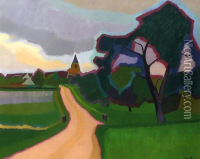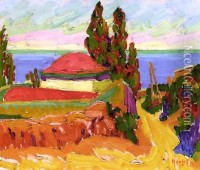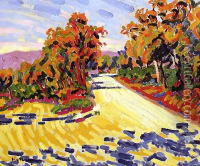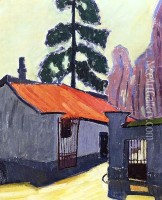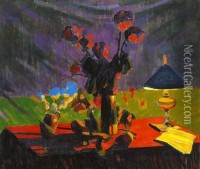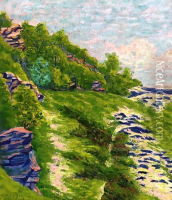Armand Schonberger Paintings
Armand Schönberger was a Hungarian painter, born in 1885 in Budapest, Hungary. His career spanned several decades, during which he witnessed and adapted to numerous changes in the art world, from the academic traditions of the 19th century to the modern movements of the 20th century. Schönberger's work is often characterized by his ability to blend elements of realism with the emerging styles of modernism, making him a significant figure in Hungarian art history.
Schönberger's early education in art was rooted in the classical training of the Hungarian Royal Drawing School, where he developed a solid foundation in the techniques and principles of painting. However, his artistic journey took a pivotal turn when he traveled to Paris, the art capital of the world at the time. In Paris, he was exposed to the avant-garde movements that were sweeping through the European art scene, including Impressionism, Post-Impressionism, and the early stages of Expressionism. These experiences deeply influenced his style, leading him to experiment with color, light, and composition in innovative ways.
Upon returning to Hungary, Schönberger became an active participant in the country's art scene, contributing to the development of modern Hungarian painting. Throughout his career, he exhibited widely, both in Hungary and internationally, gaining recognition for his distinctive style. His work often depicted urban and rural landscapes, portraits, and still lifes, imbued with a sense of emotion and atmospheric depth. Schönberger's ability to capture the essence of his subjects, combined with his nuanced use of color and form, earned him a place among the notable Hungarian artists of his time.
Despite the challenges posed by the two World Wars and the changing political landscape in Hungary throughout the 20th century, Schönberger continued to produce work that resonated with both the public and critics. His contributions to the Hungarian art scene were recognized with several awards and honors, solidifying his legacy as a key figure in the transition from traditional to modern art in Hungary.
Armand Schönberger passed away in 1974 in Budapest, leaving behind a rich body of work that continues to be celebrated for its artistic merit and historical significance. His paintings are held in numerous public and private collections, serving as a testament to his skill and vision as an artist. Through his innovative approach to painting, Schönberger played a crucial role in shaping the course of Hungarian art in the 20th century.
